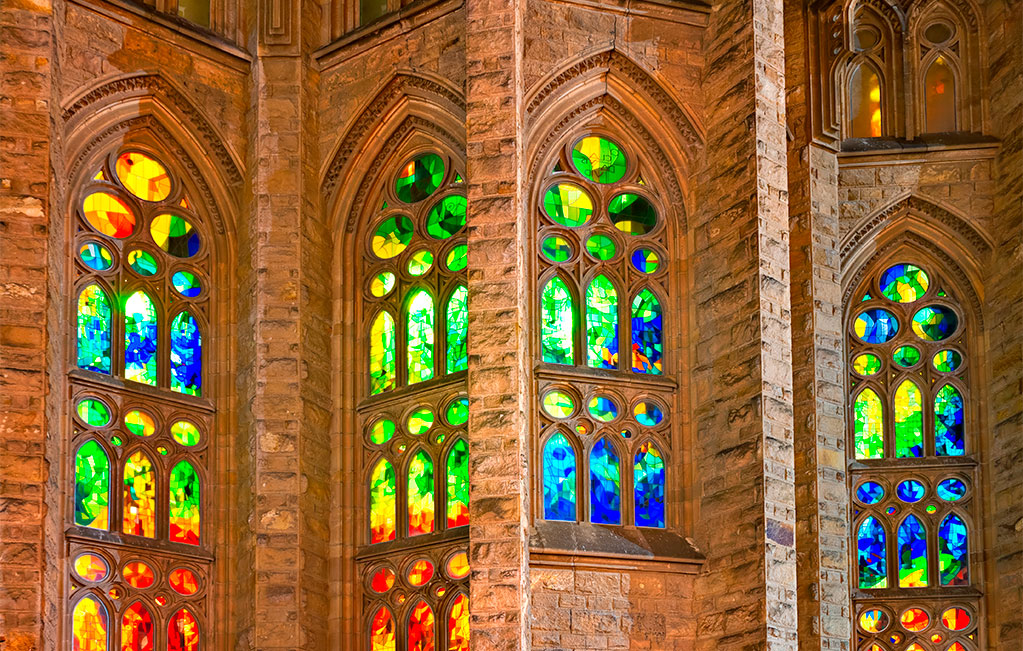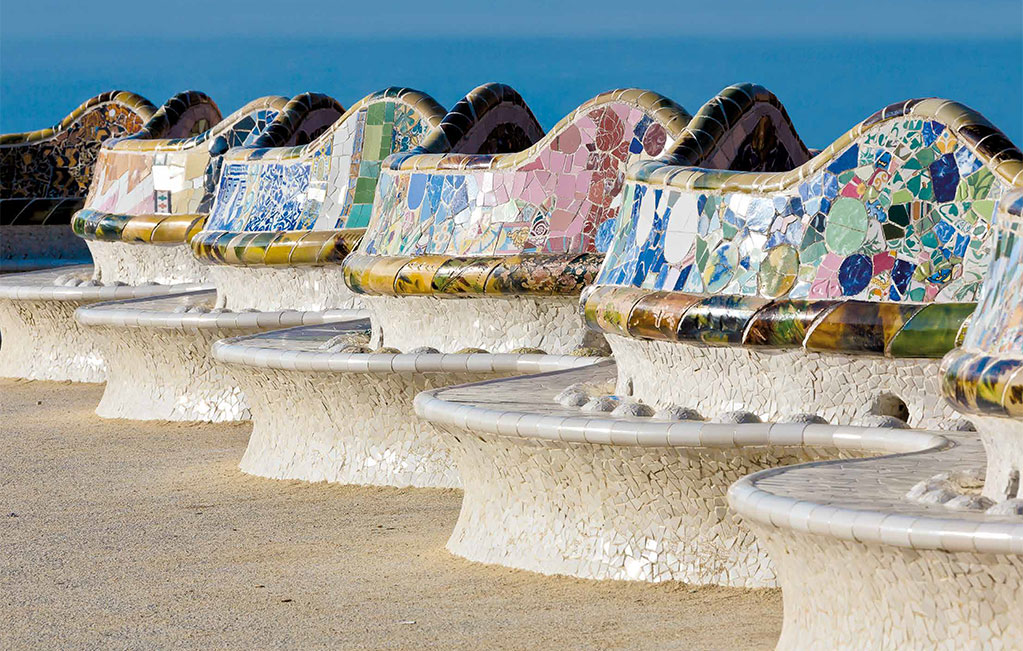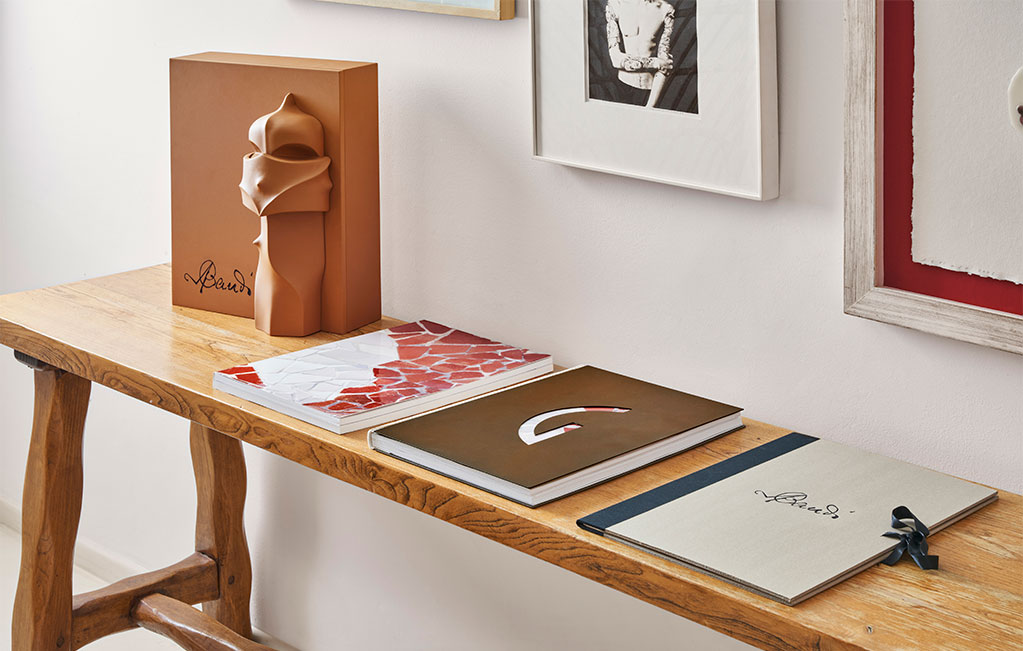The art of Gaudí and Mediterranean culture
Gaudí’s work is rich in references to Mediterranean culture. We take a look at some of these base elements of his style on the occasion of the International Day of the Mediterranean (November 28).
An immortal landscape
Antoni Gaudí’s inspiration spans centuries of cultural heritage. However, he didn’t stop at simply drawing inspiration from elements from the civilisations born in the Mediterranean, but embraced all the forms created by nature, from geography to plant life.

The dragon in Park Güell, Barcelona 1900-1914.
Thus, beyond the influence of Greece and the Arab art, Gaudí’s architecture is underpinned by two cornerstones: light and organic forms. This is why his work transcends the boundaries of time and continues to captivate us.
Art and light
Gaudí said that the essence of the Mediterranean is in its light, a light that enables life and offers the right intensity and duration. Light is therefore essential for creating a unique artistic universe.
Gaudí’s use of light can be seen, for example, in the Sagrada Família’s stained-glass windows, featuring varying colours that illuminate the space differently depending on the time of day.

Stained-glass windows at the Sagrada Família, Barcelona 1882 to the present day.
Life and harmony
While Modernism adopted nature as a decorative element, Gaudí included it into the structure of his buildings. His work evokes the elements that we can recognize in our environment.
For Gaudí, architecture is expression, a communication of emotion and life. It oughts to be in harmony with the laws of nature, which is why he said that those who fail to consider these laws when designing a building “create disorder instead of a work of art”.
Timeless symbols
Myths are invented narratives that seek to convey a deeper layer of reality, one unaffected by changing times. In this sense, one of Gaudí’s most important works is Park Güell.
Through engravings, sculptures and mosaics, this site recreates a mythology that epitomises the Mediterranean tradition. In short, Gaudí designed a spiritual itinerary where the garden is a symbol of a harmonious relationship between man and nature.

Park Güell, Barcelona 1900-1914.
Tradition and roots
When Gaudí was asked what his favourite architectural reference was, he pointed to the tree that could be seen from the window of his studio. Trees are featured in many of the columns Gaudí created for buildings like the Sagrada Família. The vine and the cypress are some of the plant elements he frequently used. The cypress was a symbol of hospitality in Ancient Egypt, since guests were welcomed under its leaves.
The cypress tree that crowns the Sagrada Família’s Nativity Façade is rooted in a centuries-long tradition in the three religions that have marked Mediterranean culture, which share the figure of this tree as a metaphor for hope and eternity.

Left: Cypress tree crowning the Sagrada Família’s Nativity Façade, Barcelona 1882 to the present day.
Right: Detail of Gaudí’s Capricho in Comillas, Cantabria 1883-1885.
Fluidity and movement
For Gaudí, the sea symbolised movement, which he represented through the curves of his buildings. He said that he loved to observe the sea because he could see the three dimensions of space recreated in it: the sky that is reflected on the surface, the water in continuous movement and the land in the depths.
There are two works by Gaudí whose façades and interiors with curving, sinuous lines evoke the sea: Casa Batlló and Casa Milà. There is a mosaic in different shades of blue in the interior courtyard of the Casa Batlló, for example, that recreates the depth of the Mediterranean with all its nuances.

Left: Casa Batlló, Barcelona 1904-1906.
Right: Casa Milà, “La Pedrera”, Barcelona 1906-1912.
The source of great ideas
Gaudí had two qualities that made him a timeless artist: analytical skills and knowledge of the real world. This made him able to see the essence of things and create designs in which each element has its own purpose and reason for being there.
Antoni Gaudí’s creative process is covered in a now out-of-print ARTIKA creation: Gaudí Up Close recovers the unpublished legacy of the genius through his drawings and blueprints, scattered throughout different archives – until now.

